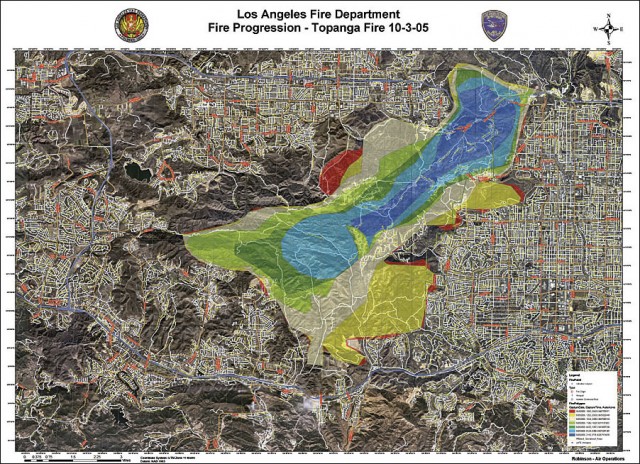computer mapping
COMPUTER MAPPING IS the general term used to describe the process of developing digital maps from aerial photographs, satellite images, global positioning systems (GPS) records, paper maps, and other archival data sources. GEOGRAPHIC INFORMATION SYSTEMS (GIS) are currently the most common implementation of computer mapping systems. A GIS consists of an organized collection of computer hardware, software and trained personnel designed to capture and manipulate geographically referenced data for generating digital maps. Digital maps have the capacity to store information that is more detailed and allow the map features to link to external databases. One application of a GISbased mapping system is automated mapping (AM), where digital inventory maps of facilities such as telephone and utility lines are linked to database information to aid in facilities management (FM). The overlaid system is known as AM/FM.
At the core of the computer mapping process is data capture, conversion, and verification. The availability of many forms of existing digital (such as satellite images and aerial photographs) and analogue (such as paper maps and statistical tables) data demands a level of flexibility to deal with these different formats during the mapping project. The general stages involved in computer mapping are to obtain the digital data, digitize any relevant analogue data, conduct a ground survey if necessary, align the digital data layers with a common reference system, and develop a continuous surface from the digital maps. The result is a spatial database that can be queried to support planning and decision-making goals.

Satellite images and aerial photographs are the most widely used inputs for many digital mapping projects. The computer-driven process of making the raw satellite image and aerial photographs seful is termed image analysis or photogrammetry. These forms of raw data are already digital, and together with their affordable cost and frequency of collection, they provide significant advantages over other data sources. In addition, since the data is already in a digital format, errors based on data conversions are minimized. But in situations where data of high spatial resolution is required, such as for facilities planning using street networks, digitized maps and GPS data are needed to represent local-level map details.
The paper map is also a valuable input source for digital mapping projects. These paper maps are mostly topographic (showing earth features) or thematic (showing specific features), and drawn to a certain scale, and the attributes of features are encoded by colors and symbols. An important characteristic of the map is that geographic features are identified by a common coordinate or reference system. The common reference ensures that identical features are at the same coordinate position in all the digital database layers. This common referencing serves to integrate the various layers of the spatial database.
The process of manually entering data for use in a mapping project involves iterative stages of recording the spatial data, entering the attribute data, verifying the data entries, and linking the spatial and attribute data. For paper maps, a digitizer device, with its flat tablet and a connected cross-haired mouse, is used to trace each of the geographic features manually. At the particular map scale, all the features of interest on the map are encoded as points, lines, or areas, depending on how they are represented on the paper map. The final digital map elements are checked for correctness and may involve tasks such as verifying object shapes or field checks. A unique identification number is used to link the digital map objects to attribute data entered into a database. The discrete map objects consisting of points, lines, and areas are called vector data.
Document scanners are also used to convert analogue to digital data. The scanning process generates raster data as the paper map is captured as a two dimensional array of cells. The resolution of the digital data is characterized by the size of the cells. Each cell contains information about the component elements of the paper map. A smaller cell size (greater resolution), determined by the document scanner capabilities, means that any particular object on the map will be defined by more cells.
Issues such as increased computer storage requirements arising from more cells and the desired accuracy of the digital map are challenges for this stage of the process. The scanned image will inevitably contain imperfections. Each grid cell needs to be encoded with information about the geographic feature it contains. Moreover, the image space must correspond to a map coordinate system. These tasks are accomplished with image analysis procedures that modify the cell attributes. The final digital map elements are checked for correctness and may involve tasks such as verifying object shapes or “ground truthing,” after which the image is ready for integration into existing spatial databases. Georeferencing is an important part of creating the spatial database. During the georeferencing process, the raw digital data is projected so that the individual map objects are correctly arranged in some specified map coordinate system. The process begins by selecting identifiable objects on the digital map for which the real world (latitude/longitude) coordinates are known. The selected objects must be evenly distributed across the map surface as the georeferencing process uses them as fixed anchors to warp the entire digital map space to fit a selected coordinate system. A common coordinate referencing system ensures that all the map layers can be coupled.